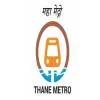Unless private sector is roped in to assist in wagon maintenance, the utilisation of additional wagon fleet will remain sub-optimal, says Sanjiv Garg, Managing Director, Pipavav Railway Corporation Limited.How do you assess the National Rail Plan roadmap?Indian Railways have prepared a National Rail Plan (NRP) for India 2030. The plan is to create a ‘future ready’ Railway system by 2030. The NRP is aimed to formulate strategies based on both operational capacities and commercial policy initiatives to increase modal share of the Railways in freight to 45 per cent. The objective of the plan is to create capacity ahead of demand, which in turn would also cater to future growth in demand right up to 2050 and also increase the modal share of Railways to 45 per cent in freight traffic and to continue to sustain it.As part of the National Rail Plan, Vision 2024 has been launched for accelerated implementation of certain critical projects by 2024 such as 100 per cent electrification, multi-tracking of congested routes, upgradation of speed to 160 kmph on Delhi-Howrah and Delhi-Mumbai routes, upgradation of speed to 130 kmph on all other golden quadrilateral-golden diagonal (GQ/GD) routes and elimination of all level crossings on all GQ/GD route.The NRP is aimed to formulate strategies based on both operational capacities and commercial policy initiatives to increase modal share of the Railways in freight to 45 per cent. The NRP aims to make up for the earlier shortfalls in rail capacity augmentation and strengthen the rail network in India, with a view to bringing down the national logistics costs to a single digit figure.IR has planned to add 90,000 wagons by 2025. How realistic is this target and what are the bottlenecks that can halt this dream?The target for adding 90,000 wagons by 2025 is indeed unprecedented and historic, as never before IR has added such a huge number to its wagon fleet in such a short period of time. In fact, the combined capacity of all wagon manufacturers in India is about 30,000 per annum, which could hardly ever be utilised, as IR had been placing piecemeal orders annually of barely 10,000-15,000 wagons. Hence, the wagon manufacturers were perpetually complaining about lack of orders from IR, and hence, the present situation has been a windfall gain for them.But the biggest bottleneck for all wagon manufacturers is currently the availability of wheels and axles from RWF, Bengaluru, whose capacity is limited and may not be able to fulfil the requirement to meet such a huge order. Further, imports from Ukraine and other European countries are not an option currently due to the ongoing war in Ukraine, leaving China as the only source. In fact, in the case of privately owned BLCS/BLSS wagons, the supply has been severely affected during the last two years as RWF has not been able to produce wheels of 840 mm diameter. Only very recently since January 2023, a limited supply of 840 mm diameter wheels has been resumed from RWF, which has been exclusively reserved for internal use of wagon repair depots only.However, the bigger challenge faced by IR will happen once the additional 90,000 wagons are inducted into the operational fleet of IR (currently about 3 lakh plus), how the Railways plan to generate capacity for their maintenance, as that would be the biggest challenge, as rolling stock maintenance is done in-house departmentally only, although the rail users have been seeking at least part outsourcing to the private sector. Unless the private sector is roped in to assist in wagon maintenance, the utilisation of the additional wagon fleet will remain sub-optimal.There is virtually no hope of the Railways being able to ramp up the maintenance facilities departmentally, as even now at some maintenance some rakes have to wait in queue for 24-72 hours for routine maintenance at some depots, thereby, seriously impacting wagon turn around, and therefore, revenue loading potential of the wagon fleet.What role does the private sector have to play in realising this vision of IR?The private sector has a crucial role only insofar as that a large proportion of this order will be supplied by private wagon manufacturers. However, this order of 90,000 wagons is exclusive of privately owned wagons, which will be additional to the pool of the IR wagon fleet. Nevertheless, this huge order will resuscitate the wagon manufacturing industry in India, as otherwise, many of them were on the verge of closure due to inadequate orders for wagon manufacturing and supply from IR.What are your suggestions to the concerned policymakers to overcome the current wheel set manufacturing capacity deficit in the country?For overcoming the shortage of wheel sets in India, there is an urgent need to encourage the private sector steel plants (as also SAIL) to develop manufacturing facilities for production of wheel sets, so that complete dependence on RWF and/or imports is avoided at all costs. Currently, only IR is the sole indigenous manufacturer of wheels and axles, and its capacity is inadequate to meet the demands currently. And imports from China (the only source available from abroad presently), are also uncertain due to the political and economic uncertainties vis-à-vis India and China.IR has set a target of 100% electrification of its network by December 2023, what is your take on this?The target for 100 per cent electrification may or may not be achieved, and is also not very critical or important in any manner, as it will have minimal impact on the overall operational efficiency of IR. This is primarily because IR will be forced to continue to operate diesel locomotives under wire for at least next five years, because of non-availability of adequate number of electric locomotives and concomitant maintenance facilities throughout the network. Moreover, the codal life of existing diesel locomotives will not be completed so soon, and IR will have to willy-nilly continue to operate them for lack of any other use, as condemning such a large number of diesel locomotives much before completion of their codal life will be terribly expensive and suicidal, despite the high price of imported fossil fuel used by them.Further, the newly set up diesel loco factory at Marhowrah in Bihar, is a joint venture of GE Transportation of the US with Indian Railways for the production of 1000 high-power freight locomotives over a period of 10 years designed to run on Indian railway tracks. The company is also setting-up two maintenance depots at Gandhidham in Gujarat and Roza in Uttar Pradesh. What will happen to these high technology newly produced diesel locomotives (committed for purchase of 1000 locos by IR in next ten years), is not clear to anyone.Further, IR did not need 100 per cent electrification so quickly. Ideally, we should have targeted for about 60 per cent electrification of IR network, as that would have served almost 90 per cent of freight traffic requirements, and about 80 per cent of our passenger traffic needs. Also, diesel locomotives are anyway essentially required to handle restoration operations at the time of accidents and derailments, floods (when the track and OHE are disturbed), etc., because in such situations electric locomotives cannot function at al





















